On Friday, November 11 the Champaign Urbana Design Organization (CUDO) Pro Show opened at Gallery 217 in downtown Champaign. The Pro Show is an annual exhibition of advertising, promotion, branding, photography, illustration, typography, print, web, motion, apps, and more created by members and friends of CUDO. This year’s show features over 100 entries from local designers, illustrators, photographers, web developers, filmmakers, and other creative professionals from around Champaign-Urbana.
While the house didn’t feel as packed as it did for last year’s show, there was certainly no lack of guests, and attendees were constantly cycling through the doors. This allowed everyone inside just the right amount of room and time to visit with friends, share hugs, and step back to appreciate the wonderful designs. Works on display included event posters, videos, books, interactive apps, and even a small wooden table that took five days to build!
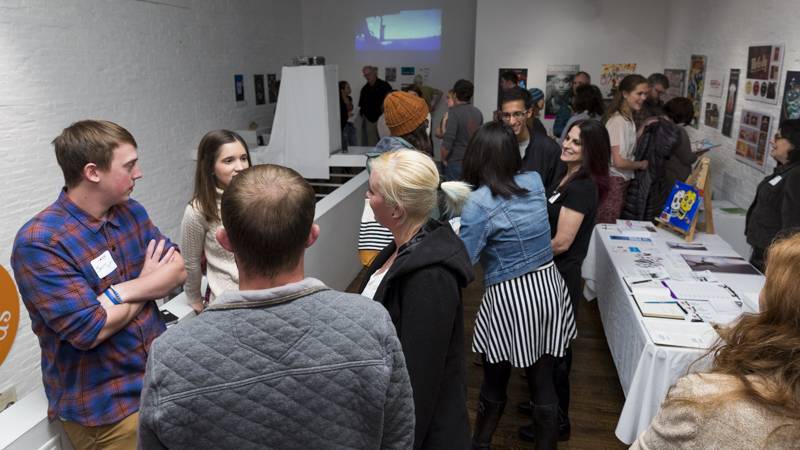
This year’s show was dedicated to Matthew Farrell, owner of Matthew Farrell Creative, who unexpectedly passed away last June. Clearly meaning much to CUDO, as evidenced by the remembrance post on CUDO’s website, the gallery has a special memory exhibit set aside for Farrell.
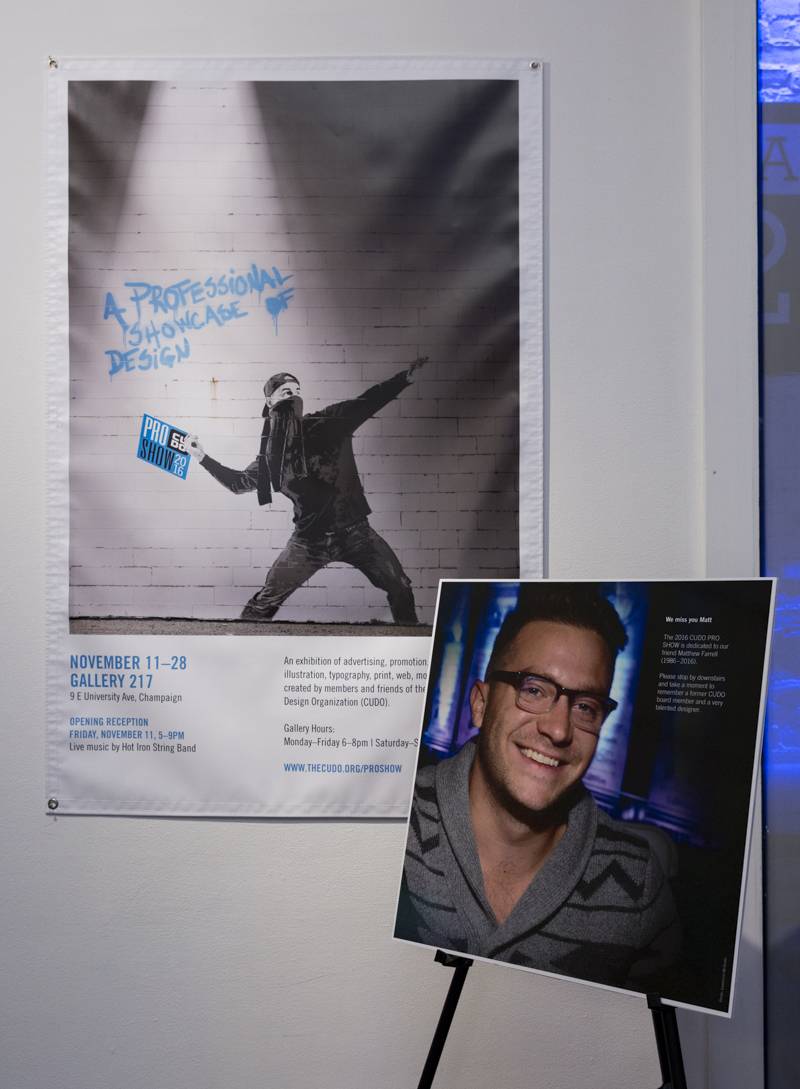
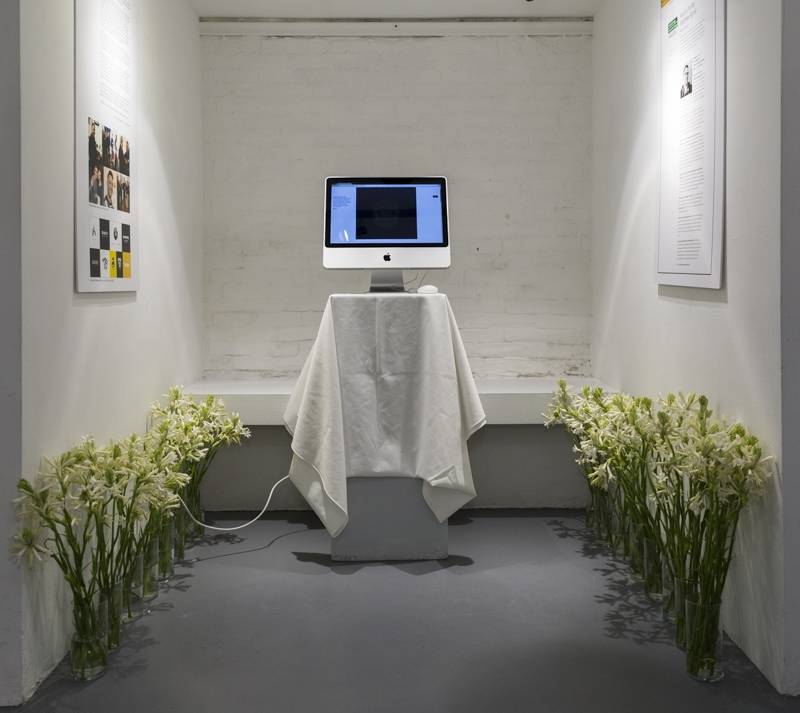
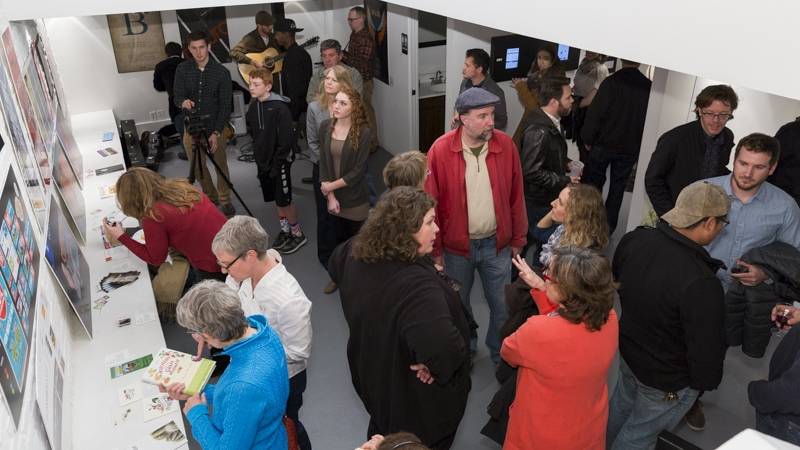
The CUDO PRO SHOW offers a fascinating behind-the-scenes look at some of the most familiar imagery in the Champaign-Urbana landscape. You can see the 217 Heating & Cooling banner that welcomes visitors to downtown Champaign, this year’s Krannert catalog, and the menu for Miga: Champaign-Urbana’s newest fusion restaurant. Encountering these objects in a gallery setting is a unique, somewhat strange experience. Interspersed with these familiar images are less-recognizable designs and student work. One of my favorites in the student category was “Giggle Water,” a recipe book featuring 1920’s era cocktails submitted by Parkland student Hilary Pope. I also enjoyed a beautiful poster for the movie Brazil, which sparked in me a naive split-second hope that Champaign-Urbana might have an Alamo Drafthouse. There is a video installation, photography, and even computer stations on the bottom floor of the gallery with websites to browse.
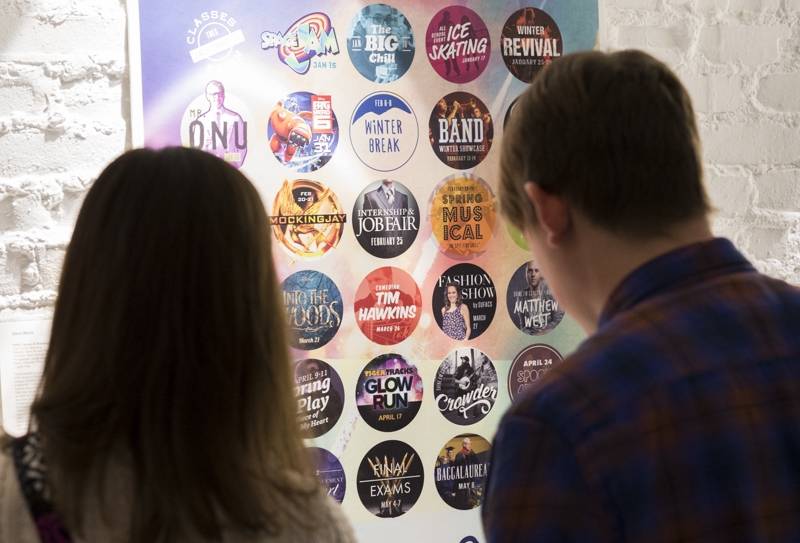
While some of the pieces in the exhibition are accompanied by a short explanation of process, most only have basic identifying information. If you aren’t familiar with design or a designer yourself, you might wonder what makes a piece “good.” Although the CUDO PRO SHOW is not a juried exhibition, I learned from my conversations that the organizers do turn away a fair amount of work that doesn’t meet their standards. Student work is allowed, but students need to get permission from professors to submit. The professor must verify that the work is an example of good design. My confusion over “good” vs. “bad” design made me realize how often we take design for granted in our everyday lives. We notice bad design when it causes problems, whether it’s a glitchy phone app, an off-putting advertisement, or a blindingly orange stretch of carpet in your office left over from the mid-seventies (an example too specific not to be culled from life). But what about good design? With this in mind, I talked to the designers behind some of the submissions I liked the most.
Below, Anna Gutsch and Johann Rischau with their five-day table.
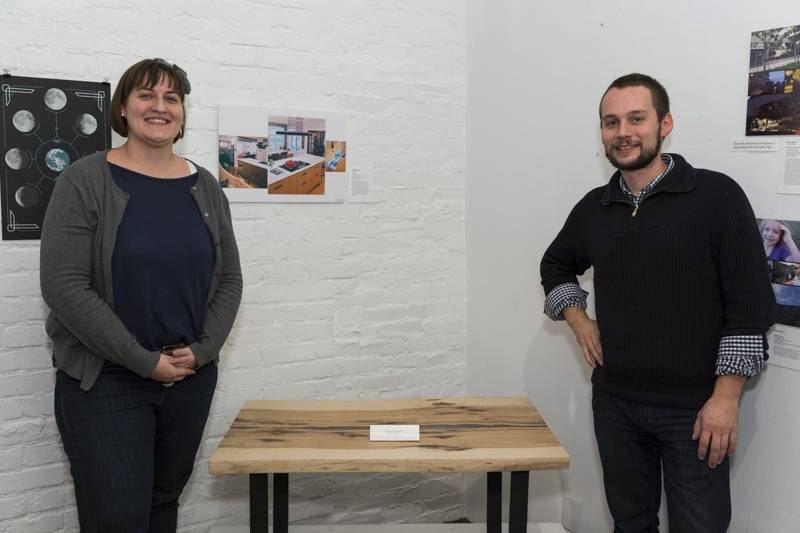
The piece of wood that Anna Gutsch and Johann Rischau of Norden German Design Studio used for this small table came from a much longer 200 year old slab. They used this slab for a kitchen table, part of a fully furnished kitchen designed for a local client. They filled the slab with resin, which I imagine must be a satisfying process. Anna also exhibited some wood stud earrings from her “Pipapo” jewelery line. Pipapo (pronounced “pe-pah-poe”) means “all bells and whistles” in German. According to Anna and Johann, it can take longer to establish a name in product design than in graphic design because projects tend to have a longer gestation period. The earrings are easier to fabricate and act as a calling card.
Below, Gloria Roubal showcases her design work.
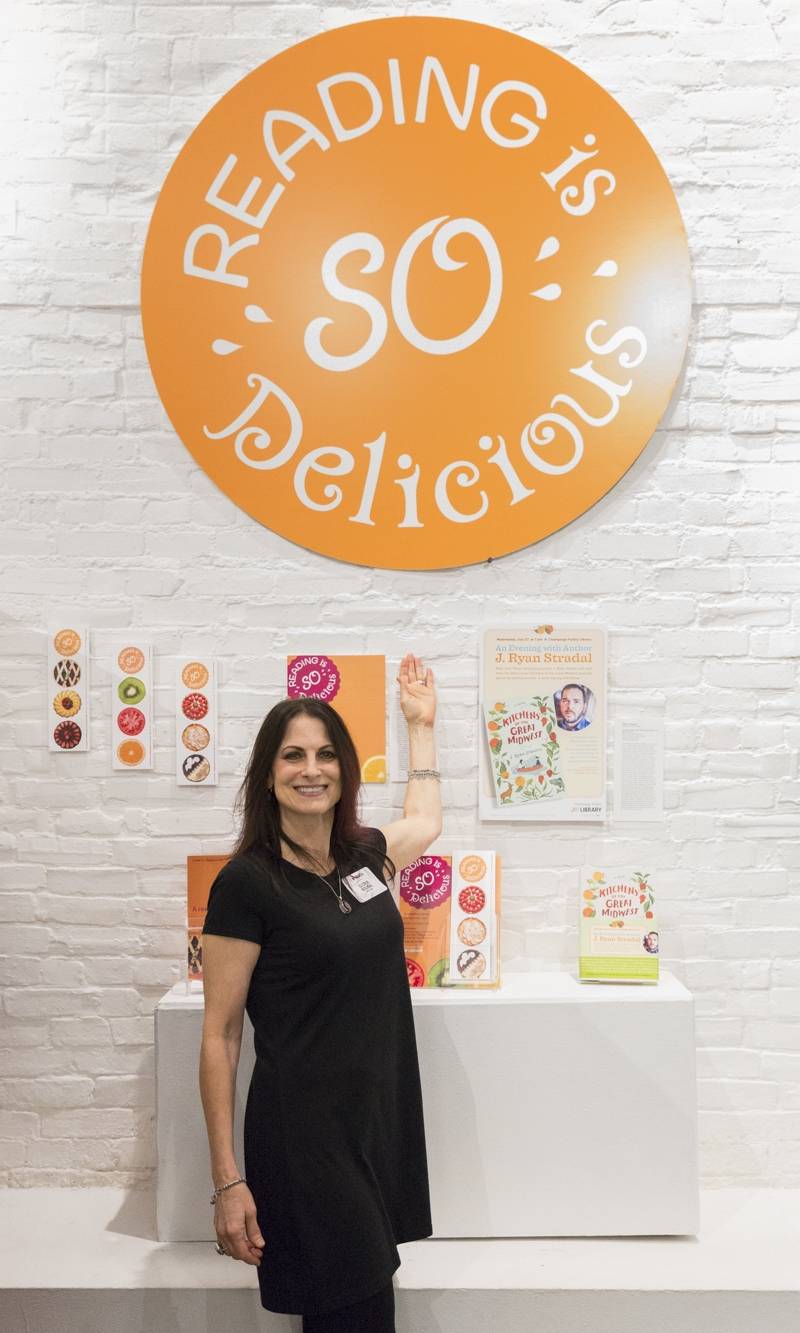
Gloria Roubal is the design and promotions coordinator at the Champaign Public Library and treasurer of CUDO. She spoke with me about the advertising campaign for the Champaign Public Library’s “Reading is So Delicious” summer reading game for grownups. The campaign consisted of bookmarks, game cards, web promotions, and a variety of other materials all featuring a splashy color palette and images of fruits. Gloria loves fonts. This campaign grew from a personal project that she undertook shortly after graduating from Parkland, which involved creating a new hand-generated font every day for a year. Although she only made it to day 275, the Reading is So Delicious campaign incorporates several of those fonts, giving it a whimsical, literary feel.
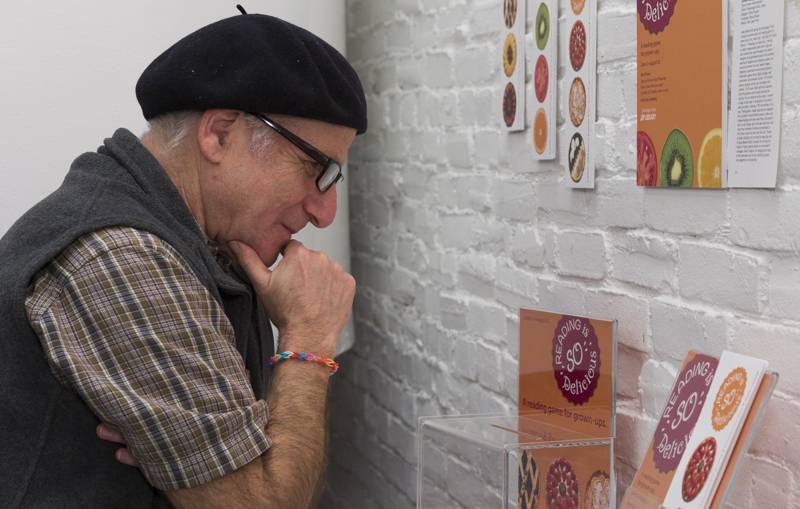
Below, Ralph Roether gets introspective about his Taste of CU creations.
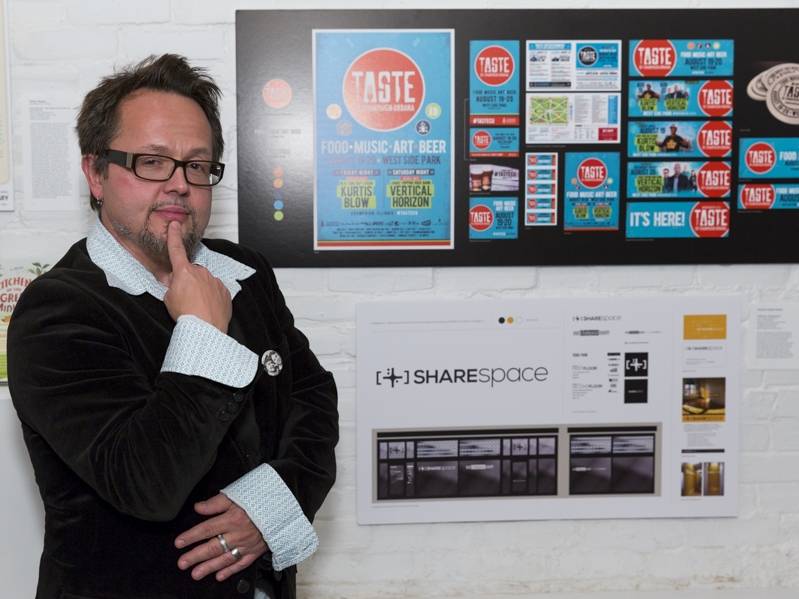
I also talked to Ralph Roether who, as it turns out, is a prolific graphic designer. After a sixteen-year stint at Horizon Hobby, Ralph now works for the Champaign Park District. He had more work in the show than I could keep track of, so I chose to focus on this year’s Taste of Champaign campaign. In his first year working on the Taste campaign, he had to use the existing logo and the basic existing color scheme. However he chose to use more color throughout the campaign, and he also introduced a distressed typeface to “grunge up” the logo and text, in order to make the campaign feel more approachable and urban. I was inexplicably fascinated with this little color swatch featured on his poster.
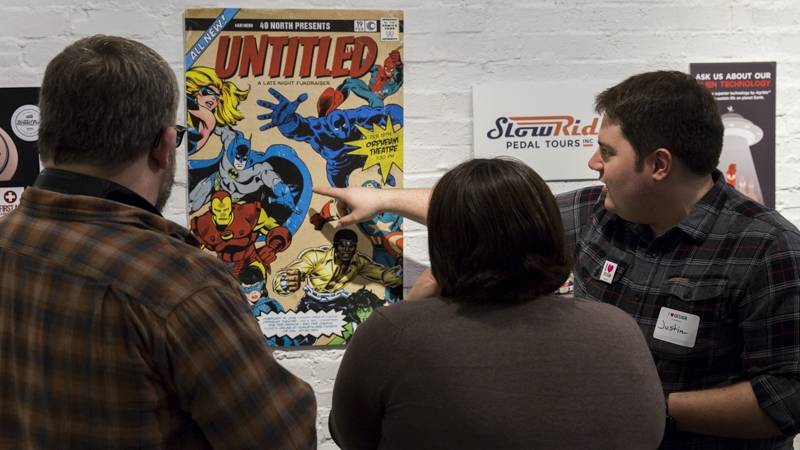
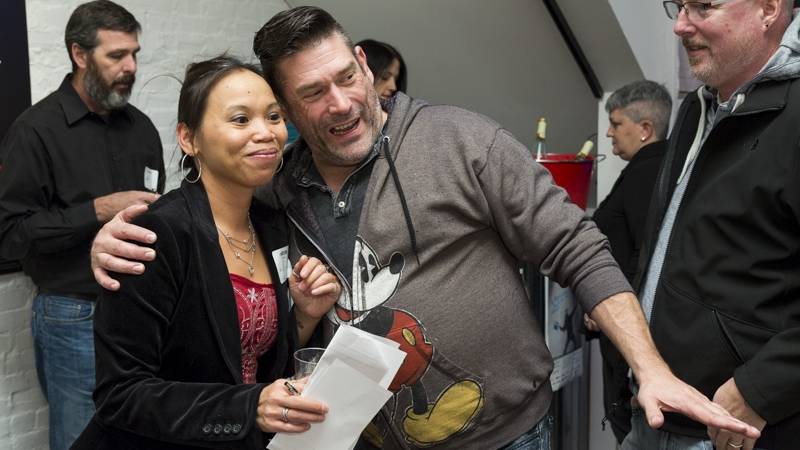
Below, Time Kuehlhorn showcases a variety of Agrible designs and apps.
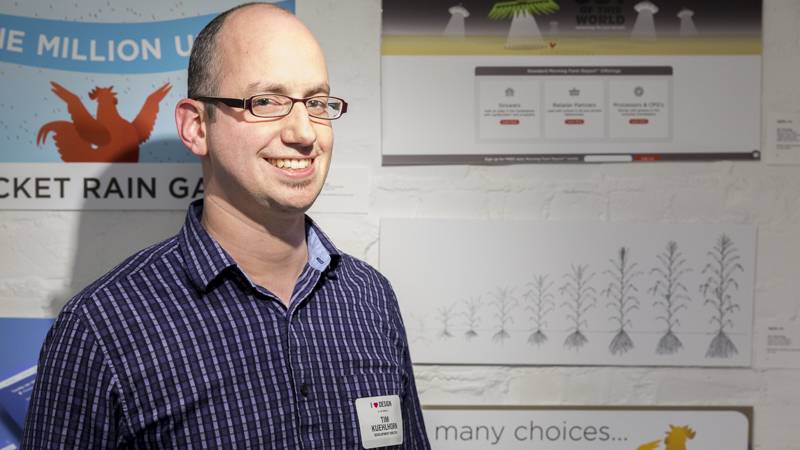
I was determined to talk to somebody about apps, one of the submission categories I have the least grasp on. I was lucky enough to catch chief technology officer at Agrible, and CUDO development director Tim Kuelhorn. Agrible is a company that provides predictive analytics for farmers. Farming can be a highly unpredictable venture. Agrible aims to mitigate some of that risk with apps like the “pocket rain gauge,” part of a suite of analytical tools called “Morning Farm Report.” The rain gauge reconciles satellite data with crowdsourced data to estimate rainfall in a specific location, letting farmers know when it’s safe to drive their tractors and how much water their crops have received. The app is designed to work in direct sunlight and across a variety of devices. These charming drawings illustrating the various stages of corn growth are part of a different tool that helps farmers track the maturity of their crops.
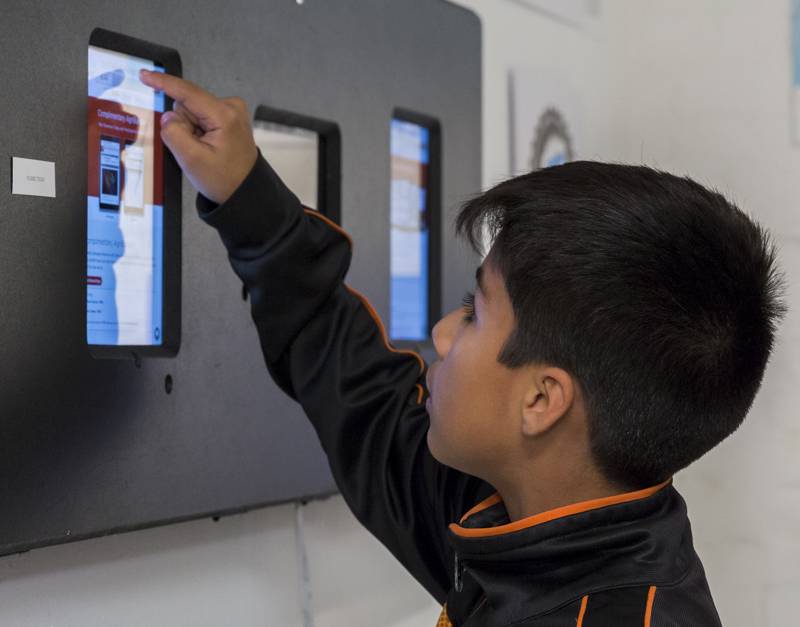
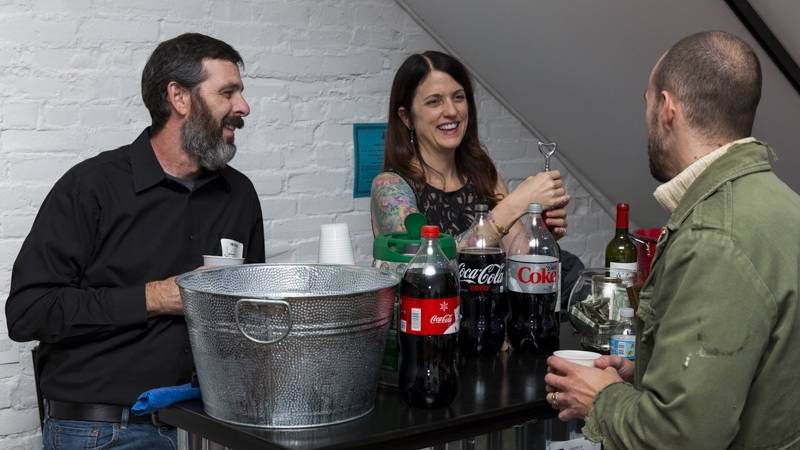
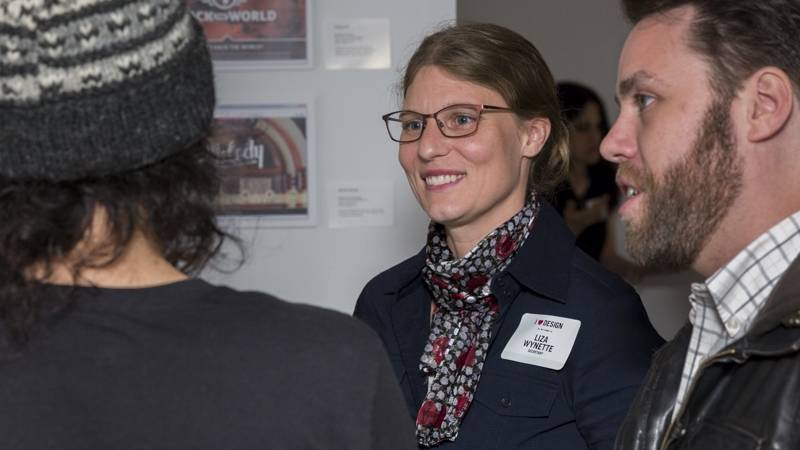
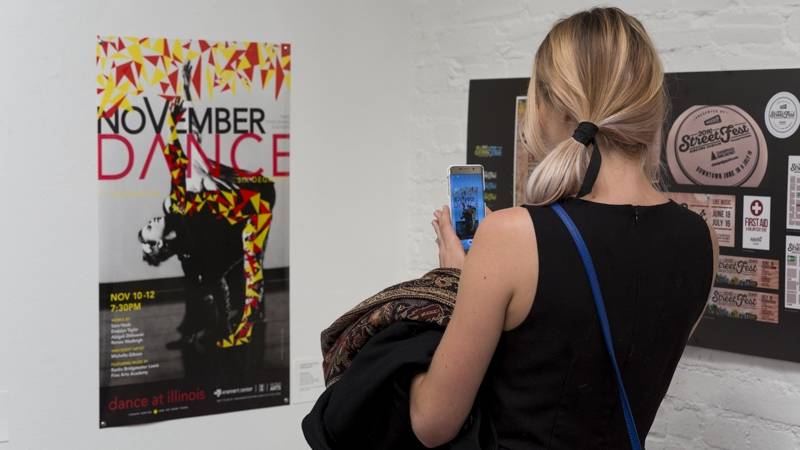
Below, Scott Barber stands with (and wears) some samples from his Scobar clothing line.
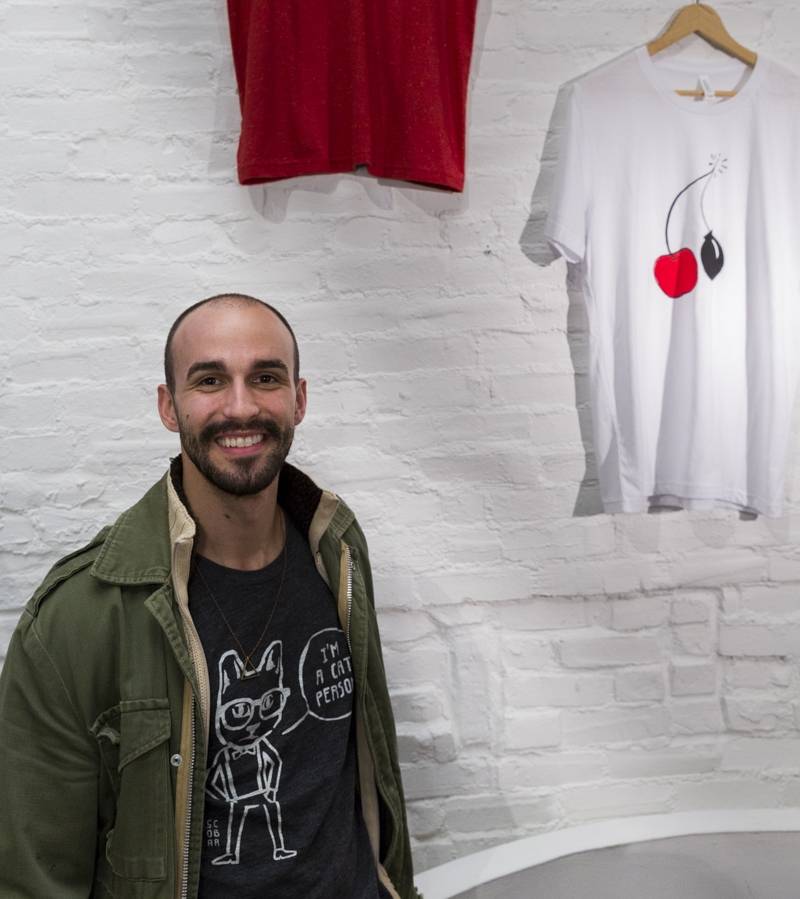
The 2016 CUDO Pro Show runs from November 11-28 at Gallery 217, located at 9 East University Avenue in Champaign. Gallery hours will be Monday – Friday, 6-8 p.m. and Saturday/Sunday 12-4 p.m., so make some time to stop by and see some great design on display!
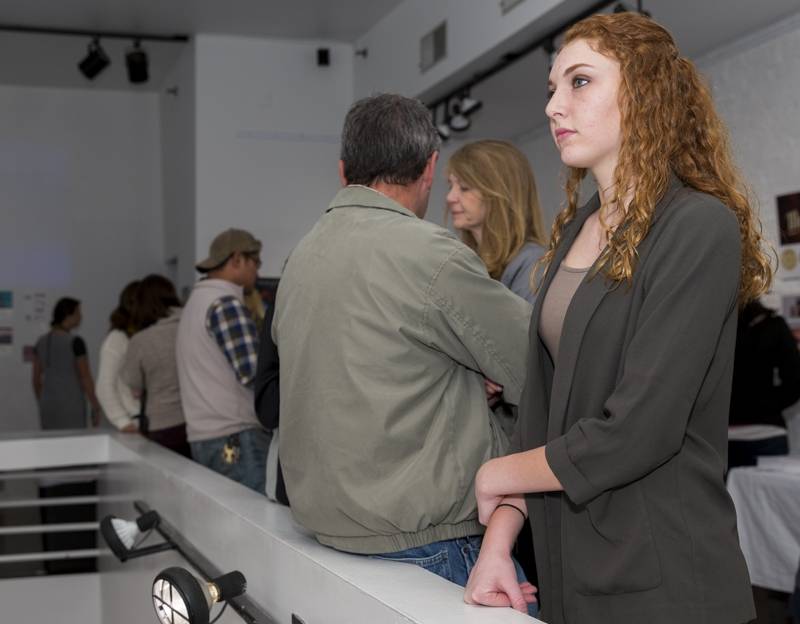
About the photographer…
Stephen is an IT manager with the University of Illinois and has been a photographer with Smile Politely since 2015. Find his photography on Facebook, the web, or contact him directly via email.








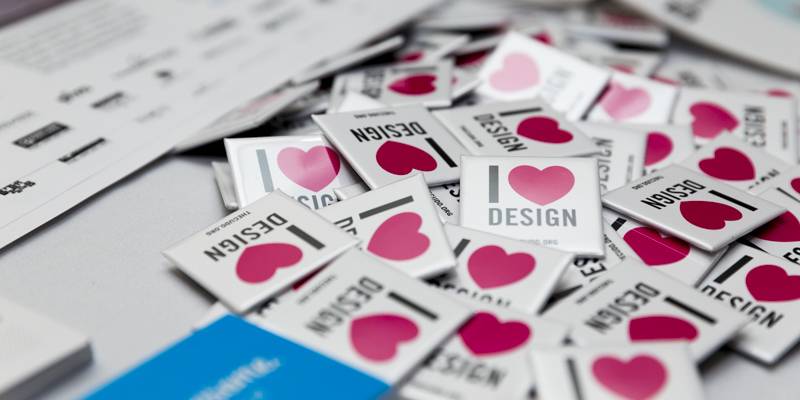
 Stephen is an IT manager with the University of Illinois and has been a photographer with Smile Politely since 2015. Find his photography on Facebook, the web, or contact him directly via email.
Stephen is an IT manager with the University of Illinois and has been a photographer with Smile Politely since 2015. Find his photography on Facebook, the web, or contact him directly via email.